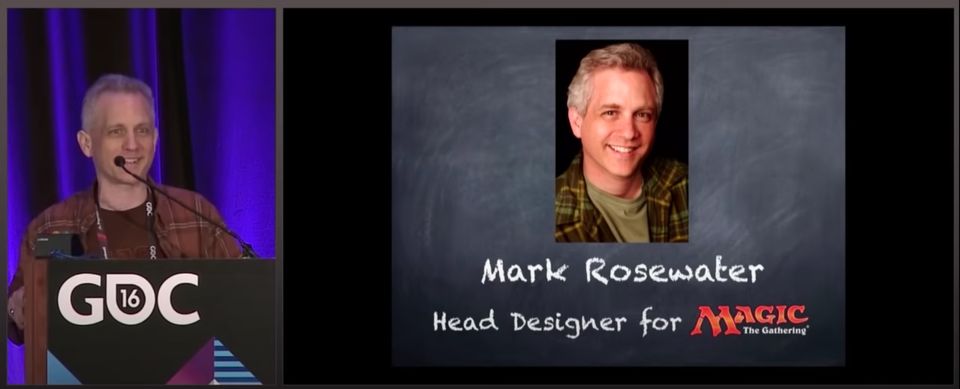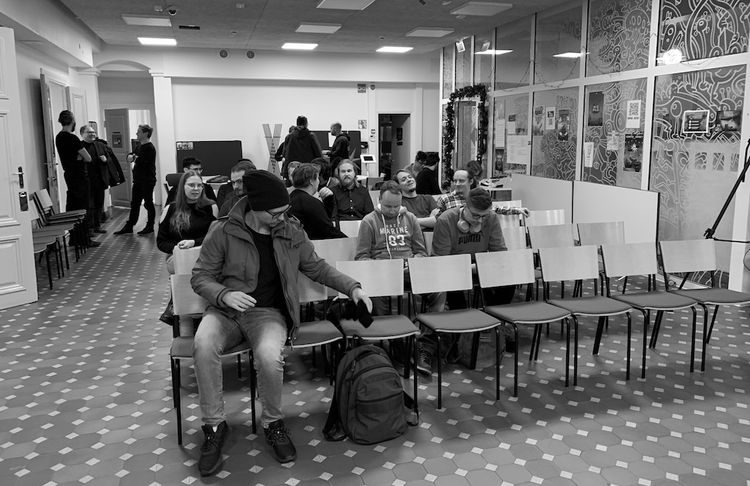Magic: the Gathering: Twenty Years, Twenty Lessons Learned


These are my takeaways from this awesome GDC talk from 2016, by Mark Rosewater, Head Designer for Magic: The Gathering.
Overall observations
If you are making games, everything that Mark covers in the presentation is worth knowing. These are all the details of making a great game
These aren’t commonly the things that come up when game devs are thinking about their next game that we are going to make.
But these should be coming to our minds. These should be high-level approaches but also the final touches for any video game developer.
Magic: The Gathering is very personal for me. I started playing MTG in 1995, just as Mark Rosewater came into work at Wizards of the Coast, the company behind Magic. I still own all the rarest cards that I collected back in the day — Library of Alexandria being my rarest card of all.
Takeaways from the video
In this GDC Talk from 2016, Mark Rosewater goes through the 20 lessons he’s learned from working on Magic: The Gathering for over 20 years.
Let’s break down each lesson.
1. Fighting against human nature is a losing battle.
Change your game to match your players, not the other way around. Gaming the game is fun. Playing MTG cards in weird ways is nice.
2. Aesthetics matter.
Players expect the components of their game to have a certain feel. Has the game the right qualities, does it feel right? Balance, symmetry?
3. Resonance is important.
Take advantage of players’ prebuilt emotional responses. The audience is preloaded, and the game designer can just build on top of existing things.
These things are like emotional responses, known phrases, etc.
E.g. if you are doing a Zombie game, use wording like Zombie Apocalypse.
4. Make use of piggybacking.
Take advantage of the players’ prebuilt knowledge. Use the player’s knowledge of concepts that are relevant to your game, to make learning easier.
- Card “Black Cat”: If the “Black Cat” dies, the opponent needs to discard a card from their hand.
- Card “Trojan Horse”: Each turn, spawn a soldier token with one Power and one Toughness.
5. Don’t confuse “interesting” with “fun”.
Positive emotional responses is often better than intellectual. Games can invoke emotional responses or intellectual responses. Emotional wins and is more likely to create player satisfaction.
For example: in No Man’s Land, we had long levels that took players ten to fifteen minutes to complete. We were seeing better engagement and replays on levels that were shorter. We worked with level design to shorten the levels and engagement went up across the game. Players got more rewards, even though the levels lost some of their “intellectuality” when they were made shorter.
6. Understand what emotion your game is trying to evoke
When you start working on a game, you need to understand what is the player fantasy. What is their role in the game? What emotions are tied to that role?
Make sure all the pieces of your game are in service of that emotion. If it doesn’t fit, it should be removed.
7. Allow the player the ability to make the game personal.
Knowledge = quality. Because you know of something, your brain will tell you that it is better.
Example: When a person asked to pick their top game, they will say that the best game is something that they’ve played. They can’t point out the best one from outside their circle of knowledge.
In game design, the more the game makes the player feel that the game is about them, the more their brain will communicate that the game is great!
Give autonomy through choices, resources, paths, expressions.
8. The details are where the players fall in love with your game.
Details matter, because individuals bond to details.
E.g. They had a unique experience with your game, because of a detail in the game. This experience was so lasting that they fell in love with the game.
9. Allow your players to have a sense of ownership.
Great games allow self-determination theory to thrive. Lots of things to do on their own, i.e. Minecraft, Red Ded Redemption etc.
As with making the game personal (Lesson #7), you give more autonomy: game designers should allow players the ability to build things that are uniquely their own.
The key is something along the lines of modding and customization, because you want your player to be able to do something that nobody else could do, that they did, that is their creation.
MTG is all about this lesson. People can craft their decks from 15,000 unique cards, and they have total ownership of their creation.
10. Leave room for the player to explore.
When building complex games, with modifiers and stats, you might leave some unexplored “exploits” into the game.
When players make discoveries, or they initiate things on their own, without the game telling them to so that, they are more invested in the game. You want players to build an investment into the game, so that they won’t leave.
11. If everyone likes your game, but no one loves it, it will fail.
Strong emotions create strong ties with the game. Players don’t need to love everything, but they need to love something about the game.
It’s actually good to polarize your players. Don’t worry that players will hate something. Worry that no one will love anything. Otherwise you might not have true fans and the game will churn players out quite quickly.
One example of polarizing game play is Clash Royale: you get a winning streak going but eventually you loose and you might even come down in throphies. Others can’t stand these crushing moments, whereas other get opposite strong emotions, and they continue pushing on, to ”beat” the opponents.
12. Don’t design to prove you can do something.
One of the Tweets I often think about is: ” Most game startups get formed because the founder had an idea for a dream game. That’s all fine, but it does get risky when you’re entertaining yourself and not an audience.”
As a game designer, your decisions have to serve your target audience and not you. Don’t let your ego drive your decisions.
Just because you haven’t done something before, isn’t a good enough reason to do it.
13. Make the fun part also the correct strategy to win.
The promise of a game: ”If you do what the game tells you to do, it will be an enjoyable experience.”
Your players will try to use any rules as a winning strategy. In a bad game, the winning strategy might not be a fun one. At the end though, they will rightfully blame the game if that isn’t fun.
Bad game: the player who spends the most time playing a mindless grind, wins.
Fun game: the player who reaches mastery through hours of challenging gameplay, wins.
14. Don’t be afraid to be blunt.
People can just miss the obvious.
In Walking Dead: Our World, we did early playtests which revealed that people were tapping on the gun, and the gun was firing into the direction where the gun was. Once we added ”Tap Walkers to shoot them” we got players to do the correct and fun thing.
15. Design the component for the audience it’s intended for.
Understand your player personas. Understand what motivates them.
You might have a player base who plays the game casually and doesn’t enjoy competiton a whole lot. It might not be beneficial to add PVP into your game, even though Clash of Clans and several other top grossing games have PVP.
It’s important to understand what different kind of things your players want, as well as the different kind of players you have.
16. Be more afraid of boring your players than challenging them. When you try something grandiose and fail, players will forgive. They will understand that you were trying to do something awesome. When you bore the players, they will stop playing. Respect your players and they will appreciate it.
I’ve experienced this many times with big game updates, where the game had a major exploit introduced to the game that the devs hadn’t realized.
When removing the exploit, we were scared that the players would leave in mass. But actually, they loved that we were bringing new interesting content to the game, even though there were flaws.
17. You don’t have to change much to change everything.
Instead of asking how many components, you need to add, ask how little.
18. Restrictions breed creativity.
Placing restrictions on yourself, leads you to places you would never naturally go.
At Next Games, we worked with some awesome IP. It created great restrictions, as we could utilize the world, what was there and then incorporate them into the game. When players jumped in, the world felt familiar and it removed many barriers of understanding that the game is about.
19. Your audience is good at recognizing problems and bad at solving them.
Your players have a better understanding than you about how they feel about your game and can identify problems better than you.
However, they are not equipped to solve those problems. They don’t know the tools you have available nor your restrictions.
It’s the game devs job to solve game problems in novel ways, so that the solution is a fun one for the player.
20. All the lessons connect.
They combine to to make a holistic game design view.

Did you enjoy this article?
Here are some other articles you might like.





